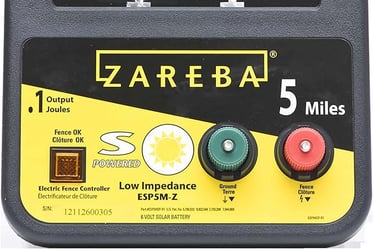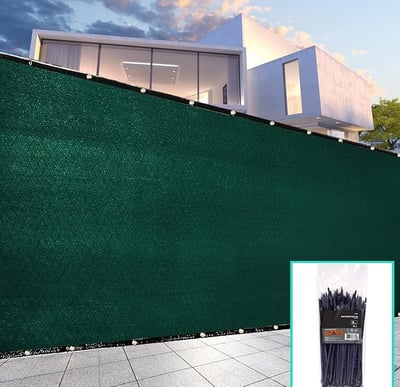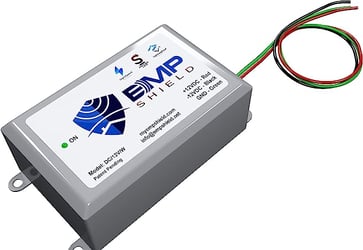Security Fence: Ultimate Guide
SURVIVALSECURITY
3/6/20247 min read
Selecting the Right Security Fence
When it comes to choosing the appropriate security fence, the decision-making process is governed by a set of criteria that balances the need for security with aesthetic considerations and budget constraints. The selection involves a comprehensive evaluation of the property’s perimeter vulnerabilities, the potential threat level, and specific security goals. For residential properties, the focus might lean more towards fences that offer a visually pleasing appearance while still providing robust protection. In contrast, commercial premises may prioritize function over form, opting for higher, more secure fencing options that can incorporate surveillance and detection systems. This evaluation process is critical in ensuring that the chosen fence meets both the security requirements and the aesthetic values of the property, without exceeding budgetary limits.
Security Fence Integration and Configuration
The integration and configuration of a security fence system are pivotal in ensuring its efficacy and reliability. This phase demands meticulous planning and precision, as even minor oversights can significantly compromise the system's performance. For electric security fences, for example, the configuration process involves setting the voltage levels to be strong enough to deter intruders without posing severe harm. It also requires the careful alignment of fence posts and panels to maintain a uniform electric field and prevent areas of weakness that could be exploited by potential intruders.
The integration of technological enhancements, such as motion sensors or surveillance cameras, into the fencing system, introduces additional complexity. These devices must be strategically placed and configured to cover potential entry points effectively, ensuring that there are no blind spots in surveillance coverage. Additionally, the system's configuration must account for environmental factors, such as the risk of false alarms triggered by wildlife or weather conditions. This demands a balance between sensitivity and specificity in sensor calibration, ensuring that the system remains alert to genuine threats while minimizing the occurrence of false positives.
Choosing the Right Materials for Security Fences
Selecting the appropriate materials for security fences is a critical decision that impacts not only the immediate effectiveness of the barrier but also its long-term durability and maintenance requirements. The decision process involves evaluating factors such as the potential threats, environmental conditions, aesthetic considerations, and budget constraints. Metal fences, for example, are highly durable and offer significant resistance to physical breaches, making them an excellent choice for high-security areas. However, they may require treatments for weather resistance and can be more visually imposing, potentially affecting the aesthetic appeal of the property.
In contrast, composite materials offer a balance between strength, maintenance, and aesthetics, with options available that mimic the appearance of wood or stone while providing superior durability and resistance to environmental factors. Electric fences, while offering a high level of deterrence and detection, require careful consideration of safety issues and legal compliance. The choice of material is thus a complex decision that must align with the overall security strategy, considering both the physical and psychological aspects of perimeter defense.
Electric Security Fence Effectiveness
The effectiveness of an electric security fence in deterring intruders significantly depends on its proper installation, integration with other security measures, and ongoing maintenance. Assessing the system's performance involves regular testing for electrical continuity, inspecting physical components for damage, and ensuring that surveillance integrations are fully operational. Upgrades and enhancements should be considered in response to evolving security threats or after incidents that test the system's efficacy. This proactive approach guarantees that the electric security fence remains a robust component of a comprehensive security strategy, effectively protecting the property while adhering to safety and legal standards.
Optimal Voltage Selection: Determine the appropriate voltage level for your electric fence based on the perimeter length and security requirements. The voltage should be high enough to deter intruders but within safe and legal limits to prevent serious injury.
Grounding System Integrity: Install a comprehensive grounding system to ensure the electric fence's effectiveness. Proper grounding prevents voltage drop-off and enhances the shock efficacy even in dry or sandy soil conditions.
Regular Voltage Testing: Utilize a digital voltmeter to regularly test the fence's voltage. This ensures the electric charge remains at the optimal level for security purposes and identifies any potential issues with power supply or fence integrity.
Vegetation Management: Keep the fence line clear of vegetation to prevent grounding and reduce voltage. Regular trimming around the fence minimizes energy waste and maintains the intended electric shock effect.
Inspection and Repair of Insulators: Routinely inspect and replace damaged or worn insulators to prevent short circuits. Effective insulation is crucial for maintaining the fence's electric integrity and performance.
Integration with Alarm Systems: Connect the electric fence to an alarm system to immediately alert security personnel if the fence is tampered with or if an attempted breach is detected. This integration enhances the overall security response to perimeter intrusions.
Compliance with Safety Regulations: Adhere to national and local safety standards regarding electric fences, including proper signage and barrier installations to warn of the electric hazard. Compliance ensures legal protection and promotes the safe coexistence of the electric fence within the community.
Evaluation and Selection Criteria for Security Fencing
When it comes to selecting a security fence, the decision-making process is guided by a set of critical evaluation criteria that take into account the specific needs and constraints of the property it will protect. These criteria include the level of security required, the potential threats faced, cost considerations, and the fence's impact on the aesthetic and operational aspects of the property. The selection process involves comparing different fencing materials and technologies in terms of their durability, maintenance requirements, and ability to integrate with other security measures..
Performance metrics such as the fence's resistance to cutting, climbing, or breaching attempts play a crucial role in the evaluation. Additionally, the ease of installation and the compatibility of the fence with existing security systems are important factors to consider. Ultimately, the goal is to choose a fence that offers the best balance of security, cost-effectiveness, and visual appeal, ensuring that the property is well-protected without compromising its functionality or aesthetic value. This comprehensive approach to evaluation and selection prepares the groundwork for the concluding segment of the article, which will tie together the insights and recommendations discussed, offering a cohesive overview of best practices in security fencing..
"Our Team Recommends This Screen Shield"
Security Fence Panels: Durability and Efficiency Checks
Security fence panels are central to perimeter defense, requiring systematic checks to ensure they withstand attempts at unauthorized entry while maintaining their structural integrity. Initial evaluations post-installation must verify that panels are correctly installed, with no gaps or weaknesses that could be exploited. This includes assessing the materials for their resistance to cutting, climbing, or any form of tampering, ensuring they meet the specified security standards. Regular maintenance of these panels is essential to address any signs of wear or damage, such as rusting in metal panels or cracking in composite materials.
It's crucial to promptly replace or repair compromised panels to prevent them from becoming weak points in the security perimeter. Additionally, environmental factors like wind, rain, and extreme temperatures can affect the durability of fence panels, necessitating checks to ensure they retain their integrity and functionality over time.
A structured approach to the care of security fence panels—encompassing regular inspections, immediate repair of damages, and consideration for environmental resilience—ensures the long-term effectiveness of a security fencing system. By maintaining the panels in optimal condition, property owners can ensure their security perimeter remains an effective barrier against potential threats, contributing to the overall safety and security of the premises.
Security Fence Testing and Maintenance: Critical Protocols
Effective security fencing necessitates rigorous testing and regular maintenance to ensure its long-term functionality and reliability. Initial testing is essential to confirm that all elements of the fence, including physical barriers and integrated technologies like electric currents, motion sensors, and cameras, perform optimally. This phase should simulate various intrusion scenarios to identify and address any vulnerabilities, ensuring the system's robustness against potential breaches.
Ongoing maintenance is vital to mitigate wear, corrosion, or damage from environmental exposure. For electric fences, maintaining a consistent power supply and voltage output is crucial. Inspections should regularly assess structural integrity and operational efficacy, with immediate repairs to any identified issues. Technology components require updates and recalibrations to keep pace with evolving security challenges, ensuring the fence remains an effective deterrent against unauthorized access.
Adherence to a structured testing and maintenance regimen is non-negotiable for sustaining a security fence's effectiveness. This approach involves routine evaluations and the timely update of security measures to counteract emerging threats. Such diligence guarantees the fence's capacity to protect a property by maintaining an uninterrupted state of readiness, embodying a proactive stance in perimeter defense.
Conclusion: Maximizing Security Through Diligent Fence Management
In conclusion, the efficacy of a security fence as a primary line of defense lies in its design, integration, testing, and maintenance. A meticulously planned and installed security fence system, tailored to the specific needs and threats facing a property, forms an impenetrable barrier that deters potential intruders. However, the true strength of this security measure extends beyond its physical components to the rigor of its testing and the consistency of its upkeep. Regular evaluations ensure that every part of the fence, from panels to integrated technologies, functions as intended, while proactive maintenance addresses any wear or damage, preserving the fence's structural integrity and operational efficiency. In essence, the commitment to ongoing testing and maintenance is what sustains the fence's role as a formidable guardian of property and peace of mind, underscoring the importance of a comprehensive approach to perimeter security.
We recommend this Solar E Fence Charger
"Auto Solar Flare Protection, Lightning, EMP Surge Protection."
As an Amazon Associate items and images linked can earn us commission.
This Guide Covers
Essentials of Security Fencing
Importance of material and design selection.
Balance between aesthetics and functionality.
Maintenance and Optimization
Regular testing for enduring efficacy.
Best practices for system maintenance.
Security Fence Electric Implementation
Selecting optimal voltage levels.
Ensuring compliant grounding systems.
onewordsurvive.com
Contact | Questions | Ideas
survive@onewordsurvive.com
Cookie Notice: Our website uses cookies to enhance your browsing experience. By continuing to use our site, you agree to our use of cookies. If you wish to manage your cookie preferences, you may do so in your browser settings.
As an Amazon Affiliate, our team may earn money from qualifying purchases. This page may contain affiliate links, which means if you click through and make a purchase, we may receive a commission at no additional cost to you. This helps support our research and editorial team, and please know we only recommend high-quality products.












